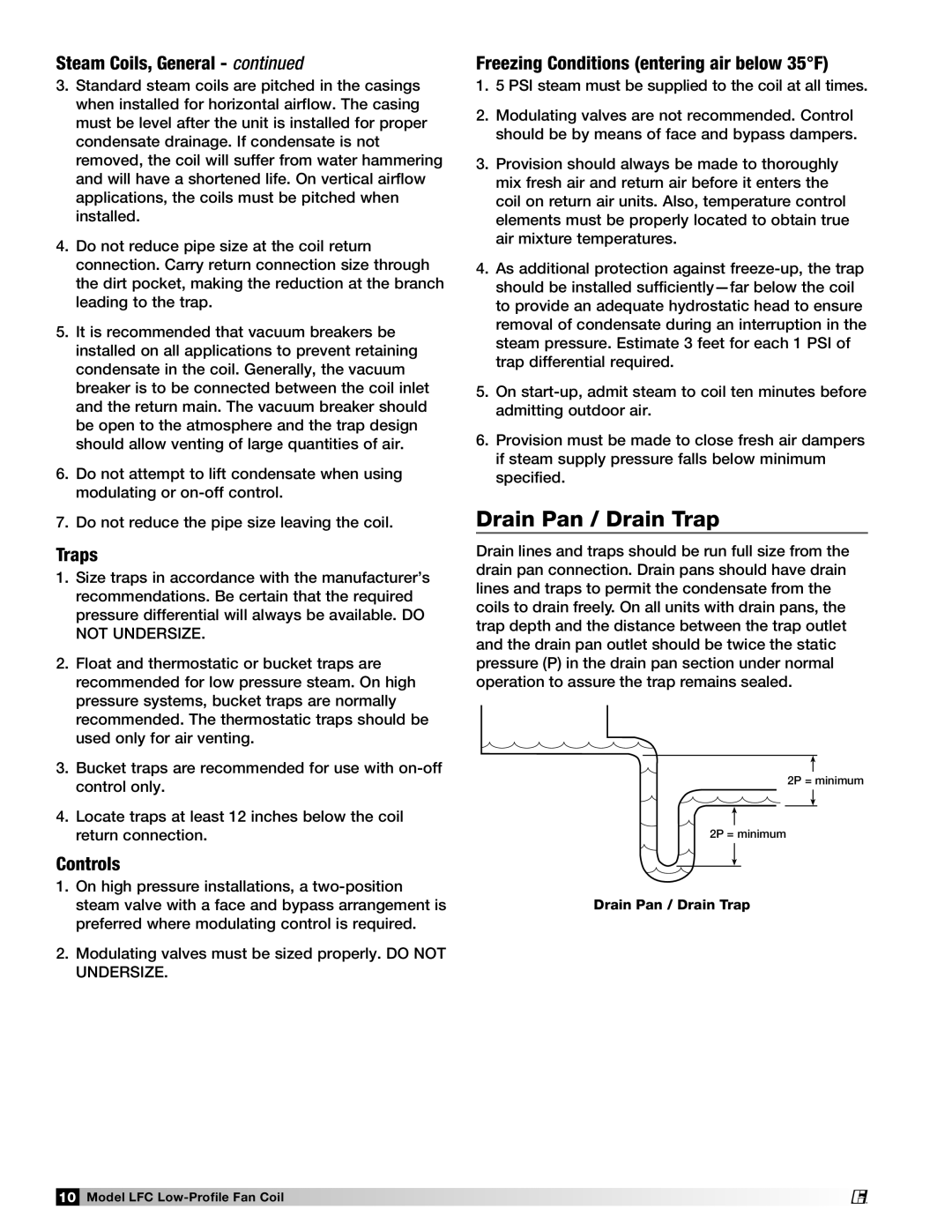LFC specifications
Greenheck Fan LFC is a prominent player in the realm of ventilation and air movement solutions, known for its innovative approach to fan technology. The LFC series offers a range of features specifically designed to enhance indoor air quality while maintaining energy efficiency. One of the standout aspects of the LFC series is its application in both commercial and industrial settings, providing versatile solutions for various ventilation requirements.One of the main features of the Greenheck Fan LFC is its direct drive design. This configuration eliminates the need for belts and pulleys, reducing maintenance requirements and increasing reliability. The direct drive system also allows for quieter operation, making it ideal for environments where noise control is critical, such as schools and healthcare facilities. With a wide range of motor options available, users can select the most appropriate solution for their specific airflow and energy consumption needs.
The LFC series is engineered with high-efficiency impellers, which greatly enhance airflow performance while minimizing energy usage. These impellers are designed to optimize air movement, allowing the fans to operate more efficiently across different speed settings. This focus on efficiency is not only beneficial for reducing operational costs but also contributes to sustainability efforts by lowering energy consumption, which is increasingly important in today’s environmentally conscious market.
Moreover, the LFC series features advanced aerodynamic designs that help to streamline airflow, reducing turbulence and improving overall system efficiency. This design innovation leads to better performance in applications requiring precise ventilation control. The fans can be equipped with variable frequency drives (VFDs), enabling dynamic control over fan speed and further enhancing energy efficiency by adapting airflow to real-time demands.
Durability is another hallmark of the Greenheck Fan LFC. Constructed from high-quality materials that resist corrosion and wear, these fans are built to withstand the rigors of harsh environments, ensuring long service life. Additionally, the LFC series can be customized with various coatings and finishes, making them suitable for diverse industrial applications.
In summary, the Greenheck Fan LFC series combines advanced technology with user-centric design. Its key features—such as direct drive systems, high-efficiency impellers, advanced aerodynamics, and robust construction—position it as a leading choice for effective and efficient ventilation solutions. Whether employed in commercial spaces or heavy-duty industrial applications, the LFC fans represent a commitment to quality and performance in air movement technology.

